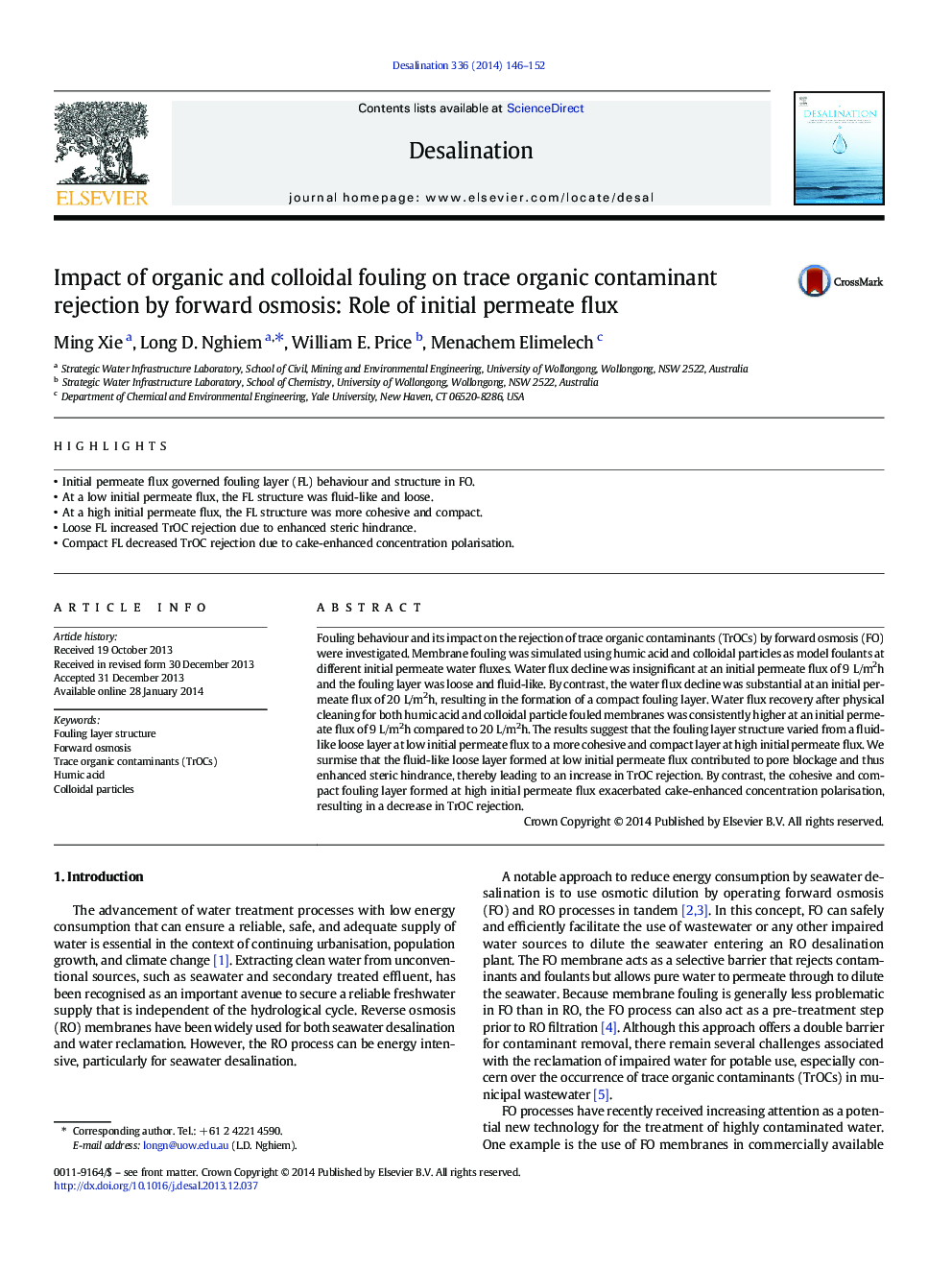| Article ID | Journal | Published Year | Pages | File Type |
|---|---|---|---|---|
| 623657 | Desalination | 2014 | 7 Pages |
•Initial permeate flux governed fouling layer (FL) behaviour and structure in FO.•At a low initial permeate flux, the FL structure was fluid-like and loose.•At a high initial permeate flux, the FL structure was more cohesive and compact.•Loose FL increased TrOC rejection due to enhanced steric hindrance.•Compact FL decreased TrOC rejection due to cake-enhanced concentration polarisation.
Fouling behaviour and its impact on the rejection of trace organic contaminants (TrOCs) by forward osmosis (FO) were investigated. Membrane fouling was simulated using humic acid and colloidal particles as model foulants at different initial permeate water fluxes. Water flux decline was insignificant at an initial permeate flux of 9 L/m2h and the fouling layer was loose and fluid-like. By contrast, the water flux decline was substantial at an initial permeate flux of 20 L/m2h, resulting in the formation of a compact fouling layer. Water flux recovery after physical cleaning for both humic acid and colloidal particle fouled membranes was consistently higher at an initial permeate flux of 9 L/m2h compared to 20 L/m2h. The results suggest that the fouling layer structure varied from a fluid-like loose layer at low initial permeate flux to a more cohesive and compact layer at high initial permeate flux. We surmise that the fluid-like loose layer formed at low initial permeate flux contributed to pore blockage and thus enhanced steric hindrance, thereby leading to an increase in TrOC rejection. By contrast, the cohesive and compact fouling layer formed at high initial permeate flux exacerbated cake-enhanced concentration polarisation, resulting in a decrease in TrOC rejection.
